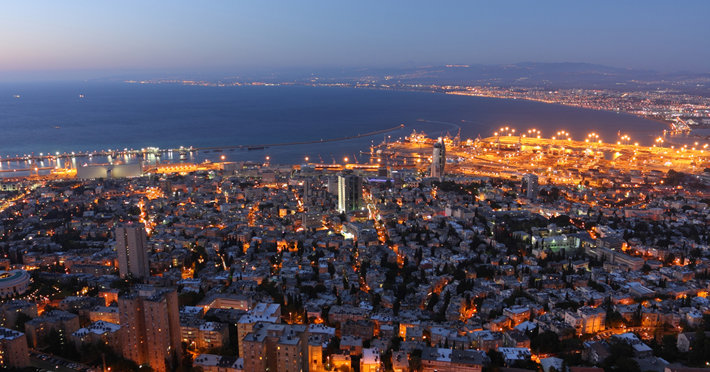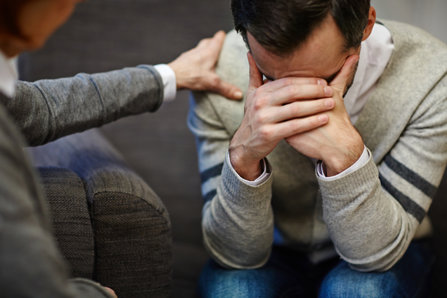Uncovering Drug Addiction in Israel

No single factor leads to a country’s drug addiction problem. Rather, such a crisis is usually the result of a lack of education on the harmful nature of drugs and alcohol, lack of access to qualified drug treatment programs, and an inability to prevent drugs from being trafficked into and around the country.
When examining Israel’s growing drug problem, one can see that all of these factors play a role, particularly as they pertain to Israel’s young adult population.
The Scope of Drug Abuse and Addiction in Israel
The European Monitoring Centre for Drugs and Drug Addiction publishes information on drug abuse across the European Union and in other countries. Though it is not in Europe, Israel is covered by the EMCDDA. According to EMCDDA data, cannabis is the most common drug of choice in Israel, with 16.5% of the population using cannabis.
Ecstasy is the second most prevalent drug in Israeli society, with about 4.5% of the population using the drug. LSD is next at 3.7%. At least 6,000 Israelis are currently seeking treatment for opioid addiction, with about 1% of the population using hard drugs like crack cocaine, opium, heroin, black tar heroin, and powder cocaine. And while the data does suggest that drug-related deaths are significantly underreported in Israel, at least 50 – 60 Israelis die from drugs each year.
Drug Abuse Among Israeli Youth Is a Growing Problem

Part of understanding the scope of drug abuse in Israel means understanding the drug problem among Israeli youth. According to several sources, there is a developing crisis of drug abuse among Israel’s adolescents, teenagers, and young adults.
A research group estimated that one in every four Israeli youth were using drugs, with first-time drug use usually occurring at age 12. The crisis is much worse in Israel’s periphery areas because of the conflict in those regions. In those districts, as many as one out of every two young Israelis use drugs.
According to the report, as many as 30% of Israeli youth are at-risk for drug abuse, meaning they are just one harmful interaction or event away from using drugs. Quoting one specialist on the subject, Inbal Dor-Karbel, “The greater the distress, the more intensive the drug use, helping youth to escape the harsh daily reality in which they live. Particularly alarming is the phenomenon of drug abuse among younger adolescents (aged 12-16).” He also said that, “This year, more than ever before, we saw how easy it is for youth to get hold of drugs via the social networks and various online applications, which make drugs accessible everywhere and at all times all over the country.”
Another factor regarding drug use among Israeli youths is a growing trend of drug experimentation during a culturally significant, formative backpacking trip that most young Israelis take. This is a rite of passage that youths take, usually to Asia or South America. The trip is considered a typical, routine life experience that usually follows shortly after mandatory army service.
“... In fact, a primary Israeli motivation to visit India is to experience drugs. The most commonly used drugs are cannabis-based products...”
Unfortunately, such trips increasingly lead Israeli youths to experiment with drugs, a habit they then bring back to Israel. Quoting one research paper, “For Israelis, high rates of drug usage are reported in comparison to the general population and their non-backpacking peers. In fact, a primary Israeli motivation to visit India is to experience drugs. The most commonly used drugs are cannabis-based products (e.g., ganja- Indian marijuana and hashish- Indian jaras), hallucinogenic mushrooms, cacti, ecstasy, and LSD.” If Israeli policymakers and public health officials intend to reverse the growing trend of drug abuse among young people, tackling this particular issue needs to be front and center.
Education and Prevention Is an Important Step for Parents
One of the most effective ways of curbing a drug problem in any given area is to educate those who live in that area on the harmful nature of drugs and alcohol. While Israel has implemented several harm reduction techniques to protect the lives of extremely at-risk addicts, the country is lacking in educational programs.
Parents and educators alike should do everything they can to teach Israeli youth on why they should not experiment with drugs and alcohol. If young people learn about drugs from their parents and educators rather than from their friends, they’re much less likely to experiment with such drugs.
Drug Trafficking Is Another Problem that Needs Solving

There is no doubt that drug trafficking contributes to the problem of drug experimentation and addiction in Israel. Given that Israel sits upon the crossroads of major international trade and movement, there is significant transfer of illegal, mind-altering substances through Israeli lands, waters, and airspace. While the vast majority of such substances move through Israel to another destination, some of it stays in Israel for local consumption.
One report on this issue shed light on the drastic changes over the decades regarding drug trafficking into, through, and out of Israel. According to that report, dramatically changing geopolitical issues, wars, immigration, tourism, and trade have influenced the black market, making it difficult for Israeli law enforcement to efficiently crackdown on drug trafficking.
Harm Reduction Is Not the Solution to Addiction
It is no mystery that Israel has taken a primarily ‘Harm Reduction’ stance on the treatment of drug addicts. Quoting one research paper on the subject, “The leading formal drug policy in Israel is the traditional approach of abstinence, probation, and punitive measures based on three main pillars: Enforcement, Treatment and Rehabilitation, and Prevention. However, under the treatment pillar, Israel has adopted a number of harm reduction services, focused mostly on people who use heroin and people who inject drugs. These include Methadone Maintenance Treatment, Buprenorphine Maintenance Treatment, and Needle and Syringe Exchange Programs.” Unfortunately, harm reduction techniques never get to the bottom of what is causing addiction in the first place. Such programs allow for a permissive stance on addiction, allowing addicts to continue using as long as they are doing so “safely.”
Harm reduction techniques are certainly well-intentioned, but they are ineffective in overcoming a drug addiction crisis. Israeli public health officials and policymakers must focus more on addiction treatment, as treating addiction is a permanent solution. Harm reduction is not.
Addiction Treatment; Helping a Loved One Break Free from Addiction for Life

Perhaps most importantly of all, professional drug and alcohol addiction treatment programs need to be made available to those who struggle with addiction in Israel. Preventive measures, education, and public health approaches have their benefit, but a population will never overcome a drug problem until those who are addicted to drugs within that population receive professional treatment.
If you know someone who is struggling with drug and alcohol addiction in Israel, please do not wait another day to ensure they get the help they so desperately need. Contact a drug and alcohol rehab center today.
Sources:
- https://www.emcdda.europa.eu/node/2758_bg#drd
- https://movendi.ngo/news/2019/05/28/israel-youth-at-high-risk-of-alcohol-other-drugs-violence/
- https://www.ncbi.nlm.nih.gov/pmc/articles/PMC5935993/
- https://journals.sagepub.com/doi/abs/10.1177/0306624X7101500113?journalCode=ijod&
- https://ijhpr.biomedcentral.com/articles/10.1186/s13584-019-0343-3


